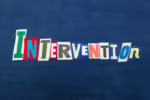How to Plan an Intervention: Best Practices for Success

Staging an intervention for a loved one with a substance use disorder is a challenging and emotional process. However, proper preparation and approach can be a critical step in helping your loved one recognize their problem and seek the necessary treatment. This blog will provide you with best practices and tips on planning an intervention, including examples of an intervention plan, effective intervention strategies and advice on how to succeed.
Essential Steps for Intervention Planning
Before planning an intervention, it’s essential to understand that the process requires careful thought, preparation and the involvement of people who genuinely care about the individual. An intervention is not about confrontation; it’s about offering support and a path to recovery.
1. Assemble the Right Team: The first step in planning an intervention is to gather a team of people with a close relationship with the individual. This team may include family members, close friends, and possibly professionals. The people you choose should be those who can communicate their concerns effectively without judgment or anger.
2. Research and Prepare: Understanding the nature of the individual’s substance use disorder is crucial. Research the specific substance they are using, the potential consequences of continued use and the types of treatment available. The more informed you are, the better you can convey the urgency of seeking help.
3. Develop a Structured Plan: A well-organized plan is vital to a successful intervention. This plan should outline the sequence of events during the intervention, including who will speak and when. It’s also essential to have a clear message of concern and support that everyone on the team agrees upon.
Example of an Intervention Plan
Creating an example of an intervention plan can help guide your approach. Here’s a basic outline to consider:
1. Introduction: Begin the intervention by having one team member introduce the purpose of the meeting. The tone should be calm and supportive, emphasizing that everyone is there out of love and concern.
2. Personal Statements: Each team member should take turns sharing their personal experiences and feelings regarding the individual’s substance use. These statements should focus on how the addiction has impacted them personally and should avoid accusatory language.
3. Presentation of Facts: After the personal statements, present specific facts about the individual’s substance use and its consequences. This might include instances of dangerous behavior, health issues, or legal problems. The goal is to help the individual see the reality of their situation.
4. Offer of Help: At this point, the team should present a pre-arranged treatment plan, such as enrollment in a rehab program or therapy sessions. Make it clear that help is available immediately and that arrangements have already been made.
5. Set Boundaries: If the individual refuses treatment, it’s essential to set clear boundaries. This might involve changes in how family members interact with the individual, such as limiting contact or no longer providing financial support. These boundaries should be firm but expressed with care.
6. Conclusion: End the intervention by reiterating your love and concern. Make it clear that the team is there to support the individual through their recovery journey.
Intervention Strategies for Success
When considering how to have a successful intervention, certain strategies can increase the likelihood of a positive outcome:
1. Stay Calm and Compassionate: Emotions can run high during an intervention. It’s important to remain calm and compassionate throughout the process. Avoid raising your voice or engaging in arguments. The focus should always be on the individual’s well-being.
2. Use Clear and Specific Language: Be clear and specific in your statements. Instead of saying, “You’re always drinking,” say, “Last week, I noticed you were drinking heavily at the family dinner, and it made me worried about your health.” Specific examples help the individual understand the impact of their behavior.
3. Anticipate Reactions: Prepare for a range of reactions, from denial and anger to tears and acceptance. It’s essential to be patient and give the individual time to process what they are hearing. If necessary, be ready to pause and resume the conversation later.
4. Follow Up: A successful intervention doesn’t end with the initial conversation. Follow up with your loved one to ensure they receive the help they need and provide ongoing support. Recovery is a long-term process, and your involvement should continue beyond the intervention.
How to Have a Successful Intervention: Final Thoughts
Staging an intervention is a significant step in helping a loved one with a substance use disorder. You can increase the chances of success by understanding how to plan an intervention, using a well-thought-out example of an intervention plan, and employing effective intervention strategies. Remember, the goal is not to shame or punish, but to guide your loved one towards the help they need. With compassion, preparation, and persistence, an intervention can catalyze positive change and start a healthier future.






